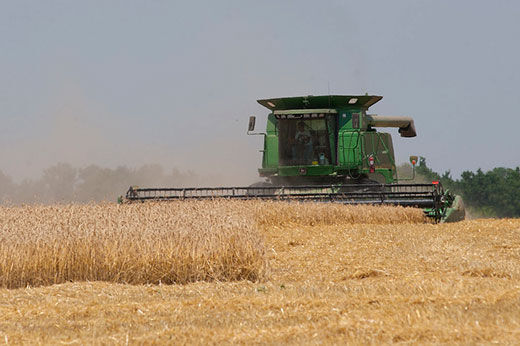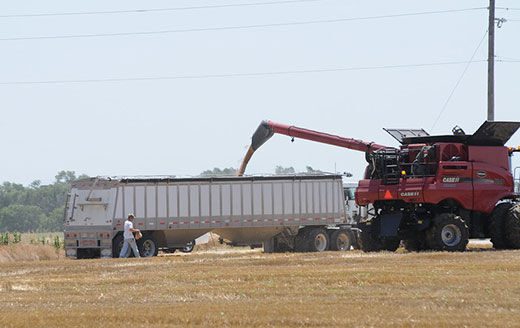In a world of science and innovation, Terry Griffin thinks that—sometimes—taking a step back is a good thing.
It’s the message he’s getting from some farmers, who say what they really need in their business is information that is more specific to their fields.
“In the early days of extension, farmers would get localized recommendations from their extension agent,” said Griffin, a precision agriculture economist with K-State Research and Extension.
“But as time goes on, those local recommendations turn into state-level recommendations, or tri-state recommendations due to a myriad of factors, one of which has been reduced funding for local research.”
In other words, today’s agricultural research may reflect best farming practices for a wide range of farms, but it’s less likely to address specific management practices and production challenges faced by any one operation.
“So,” Griffin said, “a lot of farmers have decided to supplement that research by conducting their own on-farm experimentation.”
Griffin is a member of a global project called Frontiers in On-Farm Experimentation, organized by the National Information Management and Support System. The group’s purpose is to address the worldwide problem of inefficient application of crop inputs on farm fields.
The group has published a journal article on their work that is available online.
Griffin said today’s farmers have received a big boost from such technologies as yield monitors, soil sensors, aerial drones, GPS-enabled tractors and more. Those have allowed farmers to leverage data on soil, diseases and pests, weather and other environmental factors to optimize yields.
But what is missing is a standardized way for farmers to collect data from technology, and easily use it in a way that benefits their situation.
“If we take digital agriculture—meaning the tools we’ve been talking about for many years—and combine it with on-farm experimentation, farmers will be able to make better farm management decisions based on their local conditions and management practices,” Griffin said.
Griffin is directly involved with a project to “clean” yield monitor data so it is readily available to farmers with computer software.
“We’re trying to remove the necessity for humans to look at data…because even the best scientists sometimes have a bias to them,” Griffin said. “If we can replace humans with automated, rigorous computer algorithms, we can prevent human biases from being part of the experiment.”
The result, he said, is a set of recommendations specific to the farmer.
“These products are the same products that may be applied across large regions, but we have the ability now to get localized information that takes into account the farmer’s soils and their weather regime,” Griffin said. “It also considers how that particular farmer treats inputs, or other activities in the field, such as seeding depth, row spacing, planting direction and more.”
More information on the progress of on-farm experimentations is available from Griffin on the website for the K-State Department of Agricultural Economics. He can also be contacted by email, [email protected], or on Twitter, @SpacePlowboy.


